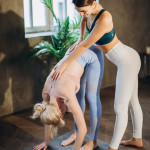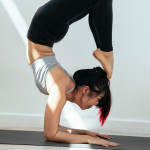Our connective tissue is born with a certain tone: some are inherently tighter, while others are looser. People with hypermobility have looser connective tissue, implying that connective tissue-based structures, including ligaments, joint capsules, and tendons, are more movable.
Should You Practice Yoga When You Are Hypermobile?
There is a common misconception that yoga is always about gaining flexibility. In essence, yoga is a collection of tools that may be used for various purposes. One advantage is physical health and wellbeing, which includes qualities like strength and flexibility.
You may utilize the skills of yoga to achieve more mental stability and relaxation in addition to physical health and fitness. Improving mental steadiness, which includes focus and serenity, is not the same as increasing physical flexibility. When it comes to focusing on the more subtle parts of yoga practice, whether or not you are hypermobile isn't the most important thing.
Things To Consider When Doing Yoga
It's crucial to stretch your muscles rather than your joints or ligaments while stretching. One of the most prevalent challenges for bendy individuals is not feeling a stretch. As a result, you are compelled to push yourself farther into a stretch to feel the pull.
Just because you don't feel the stretch right now doesn't mean you aren't stretching! Start with a little stretch, and if you feel okay the following day, you can go a little farther the next time.
You should also cultivate strength and stability. Increase the amount of time and effort you put into developing the specific types of and areas of strength in your body that help to stabilize your joints. Not all power is created equal!
If you want to stabilize your joints while retaining range of motion and functioning, the way you strengthen things in your body matters. Again, pay attention to supporting your mobility by examining your connection to your body's core. The transverse abdominis, pelvic floor muscles, and iliopsoas are all included. Make friends with the shoulder girdle and the serratus anterior.
My last recommendation is that you never your joints droop. Don't just rest your body after your range of motion; this is especially crucial for lunges and straddles, among other exercises. Yoga should be more of a strength-building workout than a flexibility one.
You should work your muscles to keep you inside the ranges of flexibility, rather than hypermobility, to increase strength without putting pressure on your joints. Allowing your knees to hyperextend while practicing standing postures is a fantastic illustration of this. To avoid knee hyperextension, use your leg muscles.
Conclusion
Yoga should not be abandoned just because you are hypermobile. Simply said, you must employ the tools that yoga gives in a manner appropriate for your body. Yoga tools should be accessible to all.













